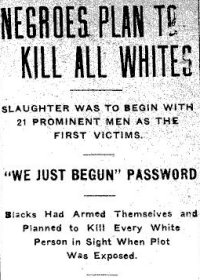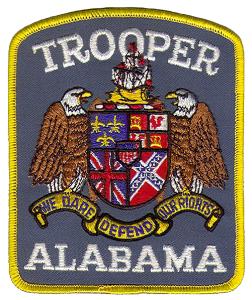Related Research Articles
The Whitewater controversy, Whitewater scandal, or simply Whitewater, was an American political controversy during the 1990s. It began with an investigation into the real estate investments of Bill and Hillary Clinton and their associates, Jim McDougal and Susan McDougal, in the Whitewater Development Corporation. This failed business venture was incorporated in 1979 with the purpose of developing vacation properties on land along the White River near Flippin, Arkansas.

The Elaine massacre occurred on September 30–October 1, 1919 at Hoop Spur in the vicinity of Elaine in rural Phillips County, Arkansas. Some records of the time state that eleven black men and five white men were killed. Estimates of deaths made in the immediate aftermath of the Elaine Massacre by eyewitnesses range from 50 to "more than a hundred". Walter Francis White, an NAACP attorney who visited Elaine shortly after the incident stated "... twenty-five Negroes killed, although some place the Negro fatalities as high as one hundred". More recent estimates of the number of black people killed during this violence are higher than estimates provided by the eyewitnesses, recently ranging into the hundreds. The white mobs were aided by federal troops and terrorist organizations like the Ku Klux Klan. According to the Encyclopedia of Arkansas, "the Elaine Massacre was by far the deadliest racial confrontation in Arkansas history and possibly the bloodiest racial conflict in the history of the United States".
The Algiers Motel incident also called the Algiers Motel Murders occurred in Detroit, Michigan, United States, throughout the night of July 25–26, 1967 during the racially charged 12th Street Riot. At the Algiers Motel, approximately one mile east of where the riot began, three civilians were killed and nine others abused by a riot task force composed of the Detroit Police Department, the Michigan State Police, and the Michigan Army National Guard. Among the casualties were three black teenage boys killed, and two white women and seven black men wounded as a result. The task force was searching the area after reports were received that a gunman or group of gunmen, possibly snipers, had been seen at or near the motel.
Malice Green was an American resident of Detroit, Michigan who died after being assaulted by Detroit police officers Walter Budzyn and Larry Nevers on November 5, 1992. Both officers were later convicted for Green's death. The official cause of death was ruled to be due to blunt force trauma to his head.
Chevie O'Brien Kehoe is an American white supremacist and convicted murderer. He is serving three consecutive life sentences for the kidnapping, torture, and murder of William Mueller and his family. His accomplice, Daniel Lewis Lee, was sentenced to death for the murders, and was executed on July 14, 2020.
James Bonard Fowler was an Alabama state trooper, known for fatally shooting civil rights activist Jimmie Lee Jackson on February 18, 1965, during a peaceful march by protesters seeking voting rights. Fowler was among police and state troopers who attacked unarmed marchers that night in Marion, Alabama. A grand jury declined to indict him that year. It was not until 2005 that Fowler acknowledged shooting Jackson, a young deacon in the Baptist church, claiming to have acted in self defense. In response to Jackson's death, several days later civil rights leaders initiated the Selma to Montgomery marches as part of their campaign for voting rights. That year Congress passed the Voting Rights Act of 1965, which President Lyndon B. Johnson signed.
In English law, unlawful killing is a verdict that can be returned by an inquest in England and Wales when someone has been killed by one or more unknown persons. The verdict means that the killing was done without lawful excuse and in breach of criminal law. This includes murder, manslaughter, infanticide and causing death by dangerous driving. A verdict of unlawful killing generally leads to a police investigation, with the aim of gathering sufficient evidence to identify, charge and prosecute those responsible.
The Goingsnake Massacre refers to the eleven victims of a fatal shootout on April 15, 1872, that broke out during a murder and assault trial in the Cherokee court in the Goingsnake District of the Cherokee Nation The dead included three Cherokee on the defendant's side, including his attorney and a brother; a US Deputy Marshal and four members of his federal posse, plus three relatives of the Cherokee murder victim. Another ten men were wounded, including both Cherokee and white men.

The Alabama Highway Patrol is the de facto state police organization for the U.S. state of Alabama, and which has full jurisdiction anywhere in the State. The Alabama Highway Patrol was created in 1936. Since its establishment, 29 officers have died while on duty. It is subordinate to the Alabama Department of Public Safety, which is itself subordinate to the Alabama Law Enforcement Agency.

Jimmie Lee Jackson was an African American veteran and civil rights activist in Marion, Alabama, and a deacon in the Baptist church. On February 18, 1965, while unarmed and participating in a peaceful voting rights march in his city, he was beaten by troopers and fatally shot by an Alabama state trooper. Jackson died eight days later in the hospital.
Richard Wayne Snell was an American white supremacist convicted for the killing of two people in Arkansas between November 3, 1983 and June 30, 1984. Snell was sentenced to death for one of the murders, and executed by lethal injection in 1995.

William Henry Harrison Clayton, was an American lawyer and judge in post-Civil War Arkansas and Indian Territory Oklahoma. He served as the United States Attorney for the United States District Court for the Western District of Arkansas, as chief prosecutor in the court of "hanging judge" Isaac Parker for 14 years and as a federal judge in the Central District of the Indian Territory that became the state of Oklahoma.
On March 7, 2006, Joseph Erin Hamley, an unarmed man, was fatally shot by Arkansas State Trooper Larry P. Norman of West Fork, Arkansas. At 7 a.m. on March 7, 2006, Hamley, who suffered from cerebral palsy, was walking alone on U.S. Route 412, just outside the community of Tontitown along the Benton-Washington county line when several Washington County deputies surrounded him. Four minutes later, before being identified, and while lying on the ground, a shotgun slug fired by Norman, an Arkansas State Trooper breaking police protocol and procedure killed Hamley. The fatal shooting was recorded from multiple vantage points on dashboard cameras of the various police cruisers present.

Louis Allen was an African-American businessman in Liberty, Mississippi who was shot and killed on his land during the civil rights era. He had previously tried to register to vote and had allegedly talked to federal officials after witnessing the 1961 murder of Herbert Lee, an NAACP member, by E. H. Hurst, a white state legislator. Civil rights activists had come to Liberty that summer to organize for voter registration, as no African-American had been allowed to vote since the state's disenfranchising constitution was passed in 1890.

Kenneth Chamberlain Sr. was fatally shot on November 19, 2011, in White Plains, New York. After his LifeAid medical alert necklace was inadvertently triggered, police came to his home and demanded that he open his front door. Despite his objections and statements that he did not need help, the police broke down Chamberlain's door. According to police, Chamberlain charged at them with a knife and he was tasered, and then fatally shot. Chamberlain was a 68-year-old, black, retired Marine, and a 20-year veteran of the Westchester County Department of Corrections. He wore the medical alert pendant due to a chronic heart problem.

David Martin Long was an American murderer executed by lethal injection in Texas for the stabbing deaths of three women. His case received media attention after he was placed on life support for a drug overdose two days before his scheduled execution. The New York Times said that the medical personnel who treated Long "found themselves in the odd situation of trying to restore to good health a man with only two days left to live."

Pamela Marie Hupp is an American woman who in 2016 murdered Louis Gumpenberger, a crime for which she is serving a life sentence. Gumpenberger, who suffered from severe mental and physical impairments, was shot to death in Hupp's home in O'Fallon, Missouri. Hupp's claim that she had shot Gumpenberger in self-defense after he pursued her into her home wielding a knife was not accepted by law enforcement, and she ultimately entered an Alford guilty plea before charges of first-degree murder and armed criminal action could go to trial.
On May 10, 2019, Ronald Greene, an unarmed 49-year-old African-American man, died after being arrested by Louisiana State Police following a high-speed chase outside Monroe, Louisiana. During the arrest, he was stunned, punched, and placed in a chokehold. He was also dragged face down while handcuffed and shackled, and he was left face down for at least nine minutes. At least six white troopers were involved in the arrest.
On July 13, 1929, the town of North Platte, Nebraska, experienced a racial exodus, when all black residents—some 200 in number—were ordered to leave by the town's white residents, following the killing of a policeman by a black man.
References
- 1 2 Kirk, John (September 4, 2014). "The long shadow of Carnell Russ' death".
- ↑ "Mrs. Carnell Russ, Etc., et al., Appellants, v. Charles Lee Ratliff, Etc., et al., Appellees, 538 F.2d 799 (8th Cir. 1976)". Justia Law. Retrieved February 12, 2020.
- 1 2 Nordheimer, Jon (June 15, 1971). "Killing by White Policeman Angers Blacks in Arkansas". The New York Times– via NYTimes.com.
- ↑ Butler, Paul (October 19, 2017). "If You're a Black Man Expect Police Brutality". Washington Post.
- ↑ Taibbi 2017, p. 281.
- 1 2 Kirk, John A. (November 19, 2015). "Carnell Russ". Encyclopedia of Arkansas. University of Arkansas at Little Rock.
- ↑ Kirk, John. "The Case of Carnell Russ". www.ualrpublicradio.org. Retrieved February 12, 2020.
- ↑ "About Us". Carnell Russ Foundation. Retrieved February 12, 2020.